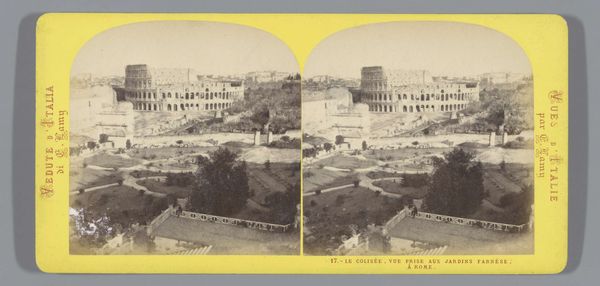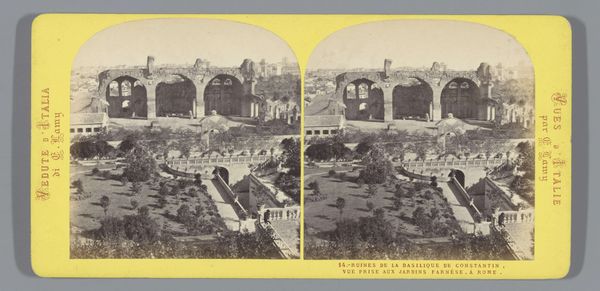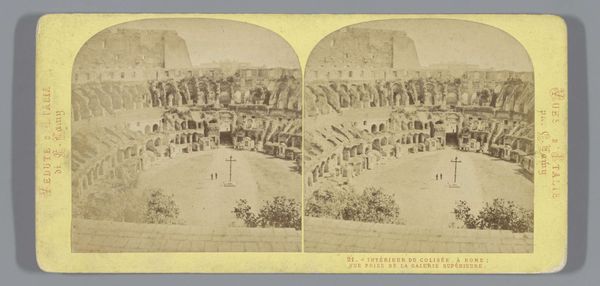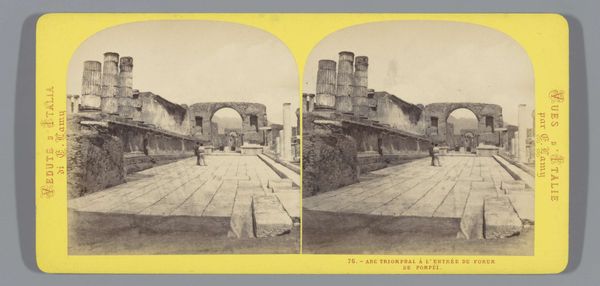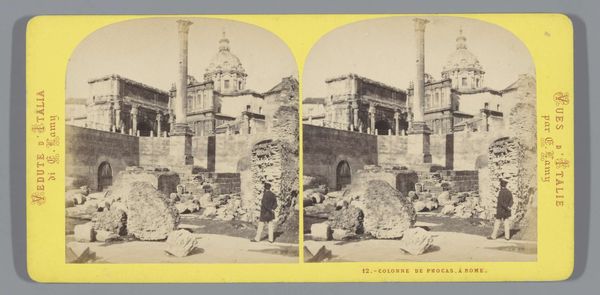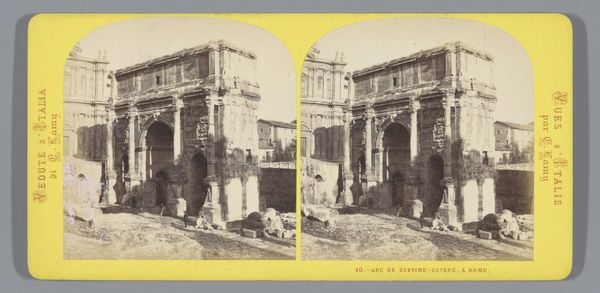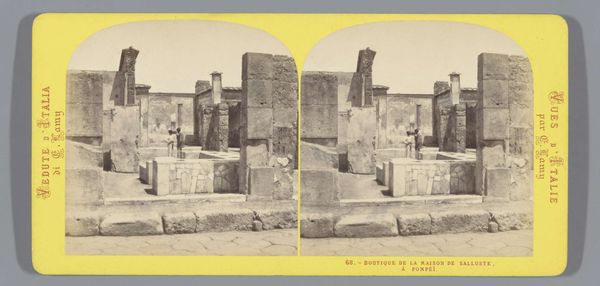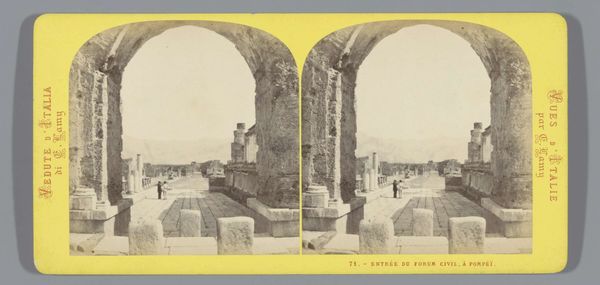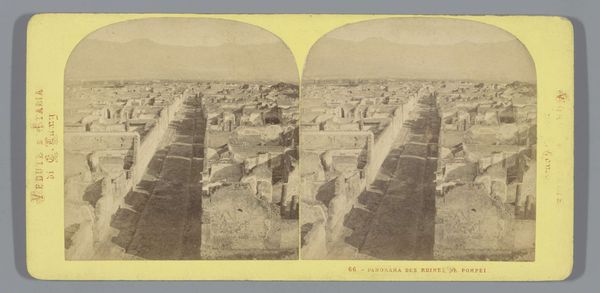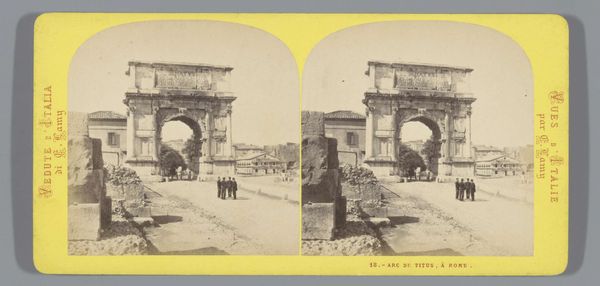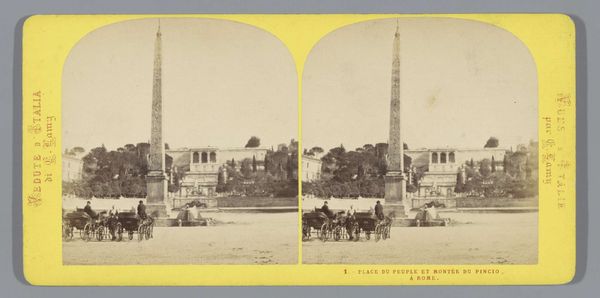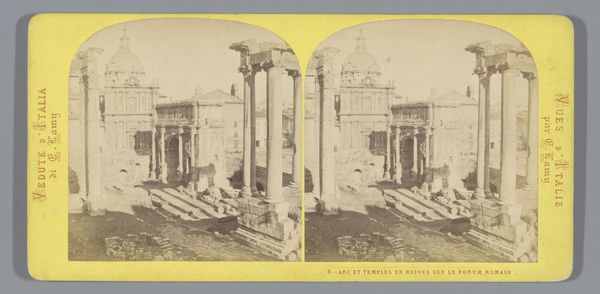
print, photography, gelatin-silver-print
# print
#
photography
#
ancient-mediterranean
#
gelatin-silver-print
#
cityscape
Dimensions: height 87 mm, width 178 mm
Copyright: Rijks Museum: Open Domain
Editor: This albumen print, "Interior of the Colosseum, Rome," was taken by Ernest Lamy sometime between 1861 and 1878. I find the figures almost comically small compared to the immensity of the Colosseum’s ruins. It’s like they’re swallowed by history. What echoes of the past do you perceive here? Curator: It's more than just ruins, isn’t it? The Colosseum resonates deeply because it’s an instantly recognizable symbol. What does its enduring image evoke for you? Editor: I suppose it’s a potent symbol of the Roman Empire – its power, its brutality, its engineering prowess. Curator: Exactly! This arena speaks to the duality of spectacle. It forces us to confront both grand achievement and visceral violence. Notice how Lamy framed the architecture. What visual echoes of that duality do you see within the photographic composition? Editor: The light and shadow, maybe? There’s so much contrast, emphasizing the dark openings against the brighter stonework. Also, the small, solitary figures emphasize the Colosseum’s vast emptiness. Curator: And what might that emptiness represent, do you think? Consider what the arena used to be, versus what it is in this photograph. Editor: Loss, maybe? The passing of time, the decline of an empire… But even in decay, it remains imposing. Its symbolism clearly lingers even after centuries. Curator: Precisely. And this early photograph helps preserve not just an image, but that complex cultural memory too. The print itself becomes a symbol, adding another layer to the story. Editor: I never thought of it that way. It’s fascinating how many layers of meaning a single image can hold, rippling across time.
Comments
No comments
Be the first to comment and join the conversation on the ultimate creative platform.

